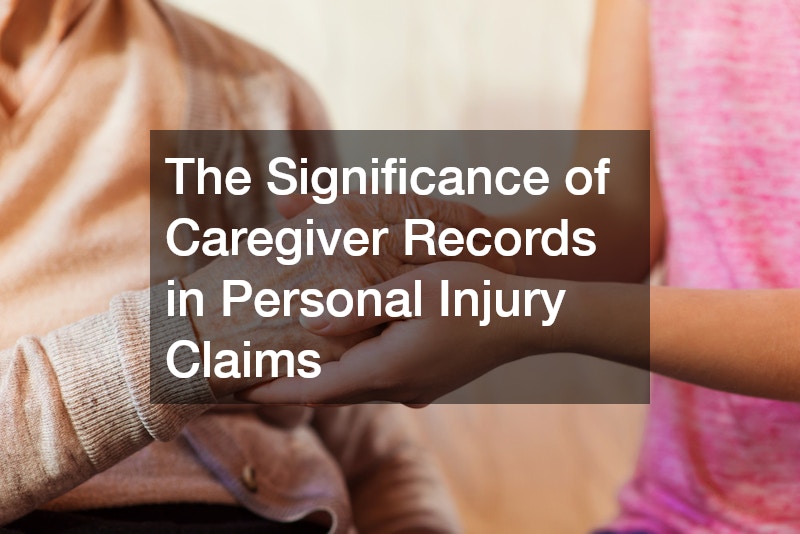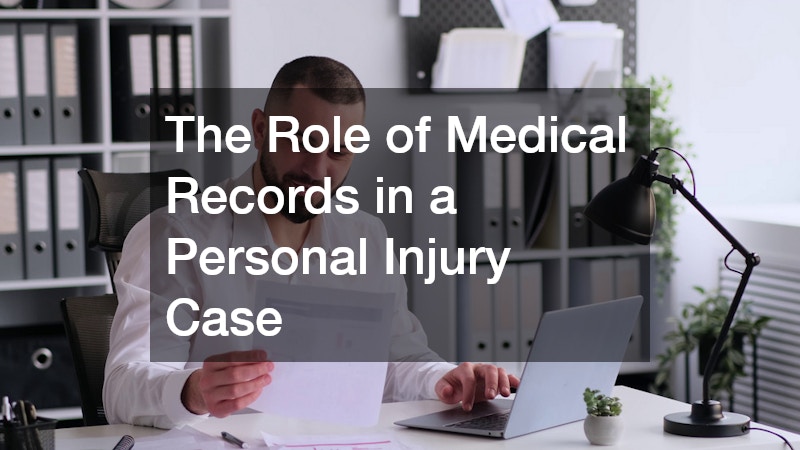Medical records are a vital component of any personal injury case. When an individual is injured due to an accident, whether it’s a car crash, a slip and fall, or a workplace incident, having a well-documented medical history is essential to proving the extent of the injuries sustained. These records provide an objective, chronological account of the injured party’s treatment, offering a clear picture of the injury’s impact on their life. In the context of legal claims, accurate and detailed medical records can be the deciding factor in securing a favorable outcome, helping to establish the severity of the injury, the necessary medical treatments, and the associated costs.
For personal injury lawyers, the ability to present comprehensive medical records can make or break a case. Whether it’s demonstrating that a client’s injuries are directly tied to the incident or highlighting the long-term effects of the injuries, these documents act as foundational evidence. The reliability and clarity of medical documentation can strengthen the argument in court or during negotiations, particularly when dealing with complex injuries or conditions. In an injury case, the more precise and thorough the medical records, the easier it is to prove that the injury caused short-term and long-term harm to the victim.
Understanding the Importance of Medical Records in Legal Claims

Medical records not only provide a detailed timeline of a person’s treatment but also serve as an essential tool for establishing the validity of claims made in personal injury cases. Regarding injury litigation, these records document the direct link between the incident and the injuries sustained. This connection is crucial in proving that the injuries were not pre-existing or unrelated. Additionally, medical records can help substantiate the pain and suffering experienced by the individual, which is a key factor in determining the value of an injury claim.
For personal injury lawyers, medical records are indispensable in advocating for their clients. A personal injury lawyer can use these records to demonstrate that the injury has led to significant medical expenses, long-term physical therapy, or permanent disability. This documentation supports claims for damages, ensuring that clients are compensated for immediate medical bills and future medical needs related to the injury. In an injury case, without accurate and detailed medical records, it can be difficult to prove the full scope of the damage, leaving the client at risk of receiving inadequate compensation.
How Medical Records Support Car Accident Injury Claims
In car accident claims, medical records are crucial for proving the severity of injuries caused by the collision. These records can show how the injuries evolved, how long the treatment process took, and how the injuries impacted the individual’s life. In many cases, the extent of the injury may not be immediately apparent, and medical records help establish that the injuries were, in fact, a result of the car accident. These records also provide the opportunity to document any ongoing treatments or rehabilitation, which can be a critical part of proving the long-term consequences of the crash.
For car accident attorneys, medical records are indispensable in building a strong case. When representing clients involved in car accidents, these records can demonstrate the connection between the collision and the injuries sustained, especially when those injuries are not obvious at first glance. Whether it’s soft tissue injuries, whiplash, or more severe traumas like fractures or concussions, medical documentation provides the necessary evidence to show that the accident was the primary cause. In an injury case, having medical records that document ongoing treatments and prove the persistence of pain or other symptoms can significantly increase the chances of obtaining full compensation for the victim.
Gathering Evidence for Workers’ Compensation Claims
When an employee is injured at work, workers’ compensation claims often hinge on the medical records that document the injury and treatment process. These records can be used to prove that the injury occurred while on the job and that the medical care received was necessary for recovery. Since workers’ compensation is typically a no-fault system, it’s essential to establish the link between the injury and the work environment.
For a workers compensation attorney, medical records are one of the most important pieces of evidence in securing a successful claim for a client. These records establish the nature and severity of the injury and demonstrate its impact on the worker’s ability to perform their job. In an injury case, these records provide vital proof that the injury was sustained during employment, which is essential to moving forward with the claim. The more accurate and detailed the medical documentation, the smoother the process becomes for the workers’ compensation attorney in helping their client secure the appropriate benefits and compensation.
The Role of Urgent Care Clinics in Documenting Injuries

Urgent care clinics play a critical role in treating injuries that require immediate attention but do not necessitate a visit to the emergency room. These clinics provide a convenient and cost-effective way for individuals to receive treatment for injuries sustained in accidents or sudden health events. The medical records created by urgent care facilities offer valuable documentation of the injuries and the initial treatment provided, which is crucial for any injury claim or legal case.
For an injury case, the records from an urgent care clinic are often some of the first pieces of medical documentation available. These records can show the immediate impact of the injury, including initial assessments, diagnoses, and treatments administered right after the incident. In some cases, urgent care visits can help establish the timeline of the injury, as they may provide the earliest evidence that the injury was a direct result of the accident. Additionally, these clinics can provide follow-up documentation showing the injury’s progression or worsening, further strengthening the case.
Using Medical Records to Prove Injuries from a Mobility Scooter Accident
Accidents involving mobility scooters can lead to serious injuries, and medical records are critical in demonstrating the extent of these injuries. While the injuries may sometimes be overlooked due to the perception that mobility scooters are low-speed vehicles, the reality is that they can cause significant harm, particularly if the individual falls or experiences a collision. Medical records provide the documentation needed to prove the severity of injuries such as fractures, sprains, or head trauma, helping to establish a direct connection between the accident and the injury.
Medical records are crucial in showing the nature of the injury and the treatment required for an injury case involving a mobility scooter. These records can help demonstrate that the injury resulted from the scooter accident, especially if there were complications or ongoing medical treatments involved. Detailed medical documentation can also establish the long-term impact of the injury on the victim’s mobility, independence, and quality of life, which is essential in securing compensation.
How Malpractice Law Relies on Accurate Medical Records
In cases of medical malpractice, medical records become the foundation of the case. Malpractice law involves proving that a healthcare professional’s negligence led to harm, which can be a complicated process. Accurate medical documentation is essential to show that a healthcare provider’s actions or omissions directly resulted in injury or worsened a pre-existing condition. Without clear, well-maintained records, it becomes much more difficult to establish the necessary cause-and-effect relationship in a malpractice claim.
In malpractice law, medical records can provide crucial evidence that supports claims of negligent medical care. If a patient was injured due to a surgical error, incorrect diagnosis, or failure to provide proper treatment, the medical records can document the missteps or lapses in care. In an injury case involving medical malpractice, these records can show discrepancies in the treatment plan, the timing of interventions, or the lack of appropriate follow-up care. They are essential for proving that the healthcare provider failed in their duty to deliver the standard of care, which ultimately led to injury.
Why Local Emergency Rooms Play a Key Role in Personal Injury Cases

When accidents occur, local emergency rooms are often the first point of contact for individuals seeking medical treatment. Emergency rooms provide immediate care for a wide range of injuries, from fractures and lacerations to more serious injuries such as head trauma or internal bleeding. The medical records created during an emergency room visit are crucial in personal injury cases, as they document the severity of the injury, the treatment provided, and the initial assessment of the victim’s condition.
For an injury case, medical records from the local emergency room are especially valuable in demonstrating the immediate impact of the injury. These records often include detailed descriptions of the injury, the initial diagnosis, and any procedures or treatments performed during the visit. They can help establish the timeline of events, showing when the injury occurred and the medical attention that was sought. This is important for establishing the seriousness of the injury and corroborating the victim’s account of the incident. In many cases, the emergency room documentation is the first piece of evidence that shows the injury was significant and required professional care.
Documenting the Role of Home Hospice Care in Injury Claims
Home hospice care is typically associated with end-of-life care. Still, it also plays a vital role in documenting long-term injuries, particularly in personal injury cases where the injury leads to chronic pain or disability. For individuals who suffer from severe or debilitating injuries, hospice care provides the necessary medical support at home, offering pain management and palliative care.
For an injury case, home hospice care records are crucial in demonstrating the extent of the injury’s long-term impact. Suppose an individual is receiving hospice care due to a personal injury. In that case, these records can show how the injury affected their quality of life, the ongoing pain, and the medical treatments required to manage it. The documentation from hospice care providers can help establish the severity of the injury, the medical needs that arise from it, and the prolonged effects the injury has had on the victim.
The Significance of Chiropractic Records in Injury Cases
Chiropractors often treat injuries related to musculoskeletal issues, including back pain, neck pain, and other conditions caused by accidents. Chiropractic records document the patient’s diagnosis, treatment plan, and progress, offering valuable insight into the ongoing nature of injuries sustained in an accident. These records can show how the injury has impacted the person’s daily life and demonstrate the need for continued care, especially when the injury involves chronic pain or reduced mobility.
In an injury case, chiropractor records are crucial in documenting the relationship between the accident and the injuries. These records typically detail the patient’s progress, any setbacks in healing, and the treatments provided to address ongoing pain. Whether the injury involves whiplash from a car accident or a slipped disc from a workplace fall, chiropractic records provide critical evidence that helps establish the injury’s long-term impact. This documentation can help lawyers argue for long-term treatment, rehabilitation, or pain management compensation.
The Significance of Caregiver Records in Personal Injury Claims

In many personal injury cases, victims require ongoing assistance from caregivers to help with daily activities as they recover from their injuries. Caregiver records can provide a detailed account of the level of care the injured person requires, the frequency of assistance, and the impact of the injury on their ability to live independently. These records document the physical and emotional strain the injury has placed on the individual, helping to establish the long-term effects of the injury further.
For an injury case, caregivers play an essential role in documenting the severity of the injury and the level of care needed. These records show the time spent caring for the victim, the tasks performed, and how the injury has affected the victim’s overall well-being. Whether the caregiving involves assistance with personal hygiene, transportation, or managing daily tasks, these records provide clear evidence of how much the injury has disrupted the victim’s life.
Medical records are indispensable in personal injury cases, serving as crucial evidence to support claims of injury, suffering, and the long-term consequences of accidents. From urgent care visits to chiropractic treatments and even home hospice care, the documentation provided by healthcare professionals offers an objective and detailed account of an individual’s injuries and recovery process. These records not only validate the victim’s account of the accident but also help to establish a clear link between the event and the resulting harm.
